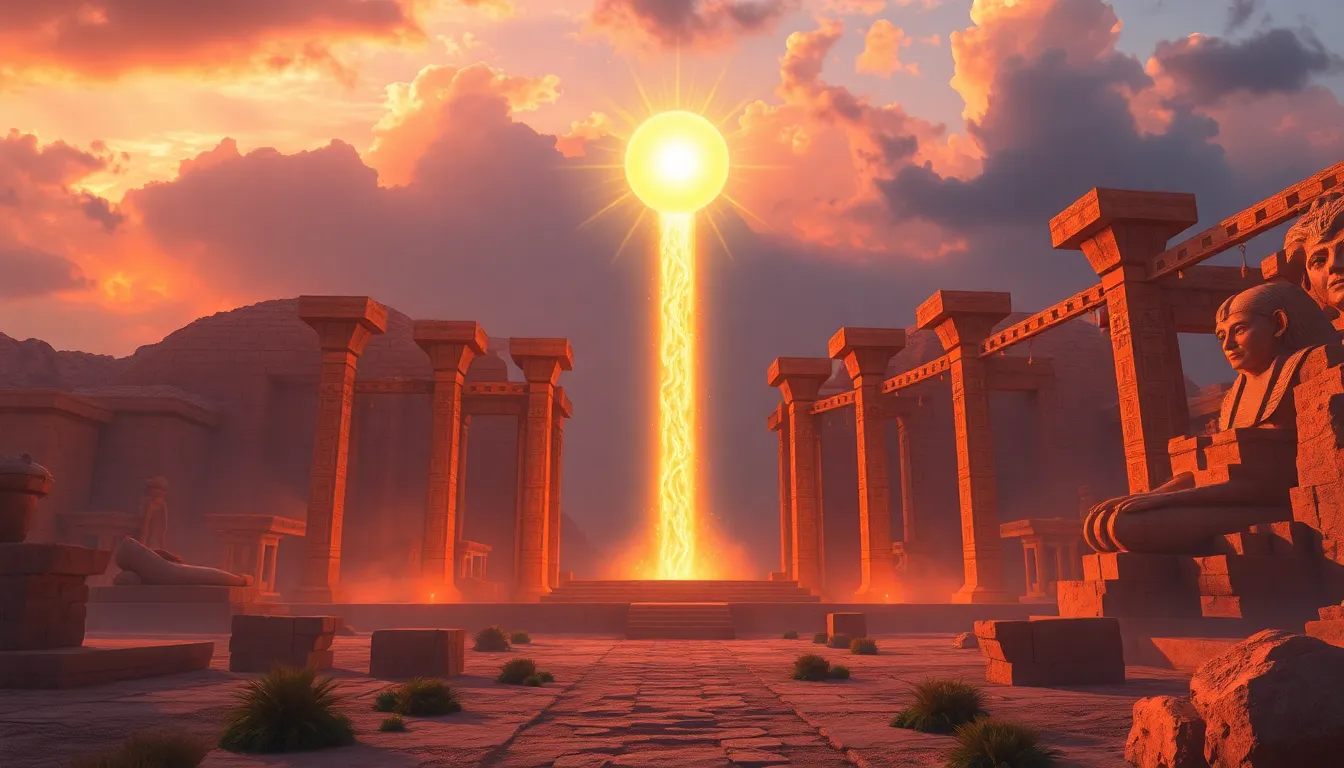The Myth of the Sun God: Ra’s Eternal Light
I. Introduction
In the rich tapestry of Egyptian mythology, few deities hold as significant a position as Ra, the sun god. Revered as the creator and sustainer of life, Ra’s influence permeated every aspect of ancient Egyptian culture. The sun was not just a celestial body; it was a powerful symbol of order, creation, and divinity. This article delves into the myth of Ra, exploring his origins, daily journey, societal role, and the enduring legacy that continues to resonate in contemporary culture.
II. The Origins of Ra: The Birth of the Sun God
Ra’s creation myth is foundational to understanding his significance. According to ancient texts, Ra emerged from the primordial waters of Nun at the beginning of time. This emergence symbolizes the birth of order from chaos, as Ra brought light to the darkness of the cosmos.
The sun, as embodied by Ra, represents:
- Life and fertility
- Order and stability
- Creation and divine power
Ra’s association with other deities, such as Atum and Geb, further emphasizes his central role in creation myths. He is often depicted as the father of the gods, signifying his importance in the pantheon.
III. Ra’s Daily Journey: The Solar Cycle
Ra’s daily journey across the sky is a captivating aspect of his mythology. Each day, he is said to travel from the eastern horizon at dawn, illuminating the world with his rays. This journey is divided into three significant phases:
- Sunrise: Symbolizing rebirth and renewal.
- Midday: Representing the peak of power and strength.
- Sunset: Indicating the end of the day and the descent into the underworld.
Ra’s battle against the serpent Apophis, who embodies chaos and darkness, is a central theme in this narrative. Every night, Ra confronts Apophis in the underworld, symbolizing the eternal struggle between order and chaos.
IV. Ra’s Role in Egyptian Society
Ra was not only a celestial figure but also a crucial element of Egyptian society. The worship practices and temples dedicated to Ra were widespread. One of the most prominent temples was the Sun Temple at Heliopolis, where rituals honoring Ra were performed daily.
Ra’s influence extended to pharaohs, who considered themselves the earthly embodiment of Ra. They used this divine connection to legitimize their rule and maintain order within the kingdom. Festivals, such as the Wepet-Renpet, celebrated Ra’s power and the renewal of life.
V. The Evolution of Ra: Merging with Other Deities
As Egyptian mythology evolved, so did the representation of Ra. The syncretism of Ra with other deities, notably Amun and Horus, led to the emergence of composite gods like Amun-Ra. This transition marked a significant cultural shift, as Amun-Ra became synonymous with the supreme deity of the Egyptian pantheon.
This evolution reflects:
- The changing societal values of ancient Egypt
- The need for a unified religious framework
- The blending of local and national beliefs
VI. Ra in Art and Literature
Ra’s iconography is rich and varied in ancient Egyptian art. Common depictions include:
- A falcon-headed man crowned with a sun disk
- Ra sailing in a solar barque across the sky
- Ra fighting Apophis, often illustrated in vivid scenes on temple walls
Literature and religious texts, such as the “Book of the Dead,” also feature Ra prominently, highlighting his role as a guide for the dead and a source of protection in the afterlife.
VII. The Myth of Ra in Contemporary Culture
Ra’s influence extends into modern spirituality and popular culture. As interest in ancient Egyptian mythology has surged, Ra has become a symbol of resilience and renewal, representing the eternal cycle of life and death.
In contemporary contexts, Ra is often referenced in:
- New Age spiritual practices
- Literature and films inspired by Egyptian mythology
- Art that draws on ancient themes of light and rebirth
VIII. Conclusion
Ra’s mythological significance is profound and far-reaching. As the sun god, he embodies the essence of life, order, and creation in ancient Egyptian beliefs. The enduring legacy of Ra’s eternal light serves as a reminder of the rich cultural heritage of Egypt and its continuing influence on contemporary thought and spirituality.
In reflecting on Ra’s story, we find that ancient myths provide valuable insights into our understanding of the human experience and the universal themes of life, death, and renewal that transcend time.




